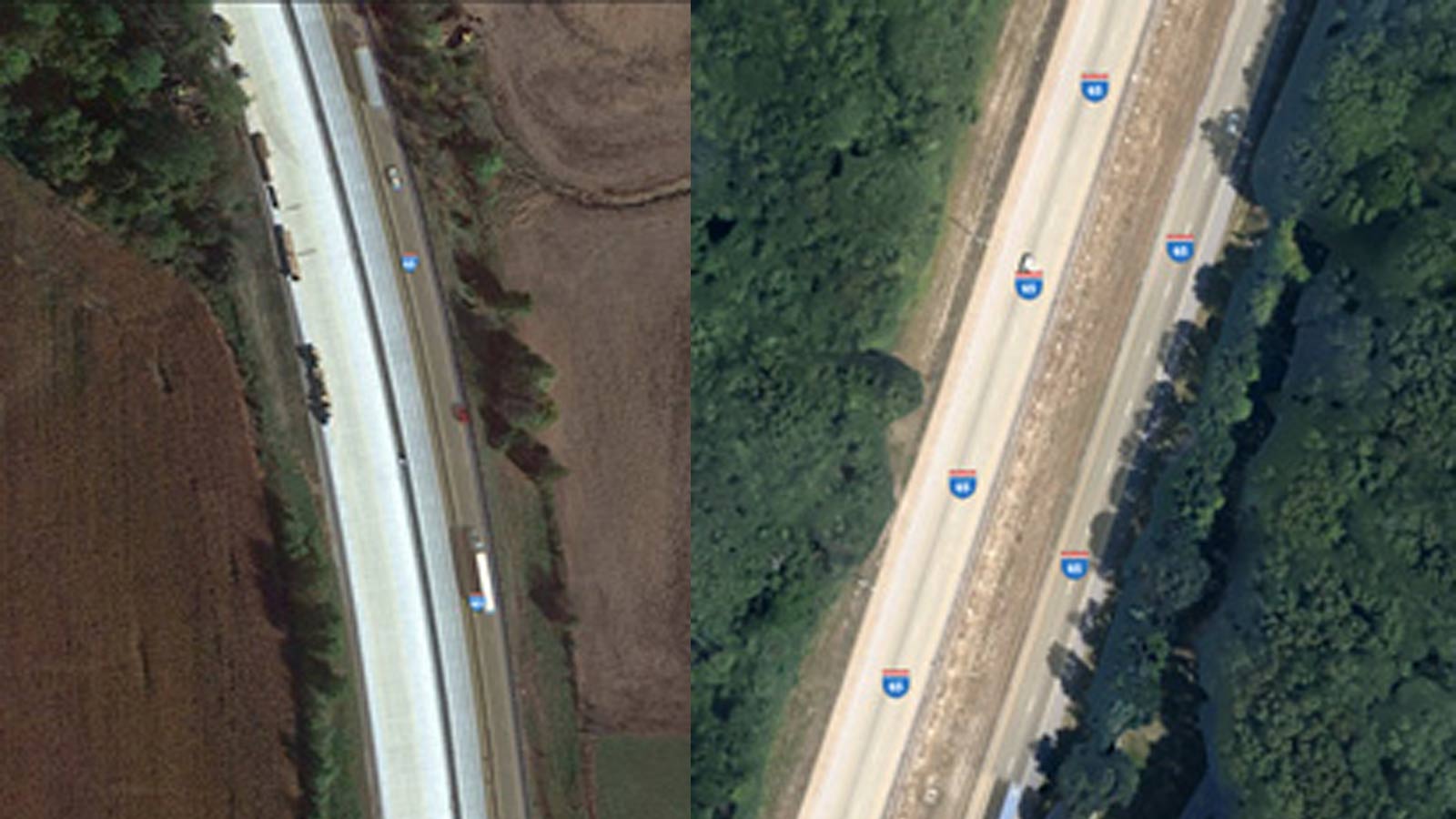I-65 Near Seymour Receives PoreShield™ Treatment

A few years ago, Tony Korba, concrete operations manager at E&B Paving had the opportunity to use PoreShield™ (SME-PS) on 126th Street in Fishers, Indiana. The project in Fishers was an all-around success, so when he got the chance to offer up a replacement for hot tar sealant for a project on I-65, Korba suggested PoreShield to the Indiana Department of Transportation (INDOT) as an alternative.
After receiving approval from INDOT, E&B Paving applied new PoreShield concrete durability enhancer to joints of 14 miles of a 12-inch-thick section of new concrete pavement on I-65 near Seymour, Indiana on April 2, 2020. It was a complete reconstruction with added travel lanes. Overall, the project included approximately 960,000 square yards of new concrete pavement.
To protect the new pavement from salt and deicer, PoreShield was applied to joints on the 12-foot inside travel lane and the 10-foot end median shoulder lane. This included a centerline joint and a construction joint. Joints were spread out every 15 feet. In total, PoreShield was applied to 55,000 lineal feet of joint.
The process involved two applications of PoreShield. First, PoreShield was applied inside of the joint. Then, after the first application was completely dry, PoreShield was applied on top of and on each side of the longitudinal and transverse joints in a one-foot wide pattern. For the application, E&B Paving used a recreational vehicle with a tank, a pump and two hoses to have two people apply PoreShield at once. “It was basically just as fast as you could walk,” said Korba. “The speed of the application was just unbelievable compared to a sealant.”
Korba believes the speed of the application is just one of the many benefits of using PoreShield. “Leaving the joints open for water to get through is a big benefit to the concrete itself, instead of trapping water with the old type of silicone or the hot tar sealant,” he said.
Unlike sealants, PoreShield is absorbed deep into the pores of concrete and fills them with a flexible, hydrophobic barrier. From the inside, PoreShield blocks salt, water and the chemicals that water carries.
So far, Korba has been impressed with PoreShield. “It [PoreShield] is holding up just like the day we applied. I’m not seeing any pavement failures,” said Korba. “I think it [PoreShield] a good product. I think it’s economical. I think it’s beneficial to the concrete pavement itself.”
Korba looks forward to using PoreShield again on various projects in the future. He hopes that more state DOTs will add PoreShield to their standard specifications. In addition to DOT projects, Korba believes PoreShield would be a good fit for municipality and commercial projects as well. “I think that everyone is going to find that there is cost savings and it is a benefit to the concrete,” Korba said.



